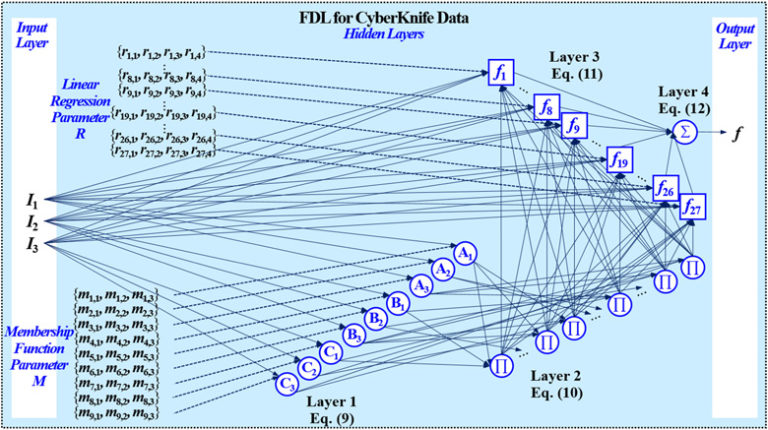
Tumor movements should be accurately predicted to improve delivery accuracy and reduce unnecessary radiation exposure to healthy tissue during radiotherapy. The tumor movements pertaining to respiration are divided into intra-fractional variation occurring in a single treatment session and inter-fractional variation arising between different sessions. Most studies of patients’ respiration movements deal with intra-fractional variation. Previous studies on inter-fractional variation are hardly mathematized and cannot predict movements well due to inconstant variation. Moreover, the computation time of the prediction should be reduced. To overcome these limitations, we propose a new predictor for Intra- and Inter-fractional data variation, called Intra- and Inter-fraction Fuzzy Deep Learning (IIFDL), where FDL, equipped with breathing clustering, predicts the movement accurately and decreases the computation time. Through the experiment results, we validated that IIFDL improved Root-MeanSquare Error (RMSE) by 29.98% and prediction overshoot by 70.93%, compared with existing methods. The results also showed that IIFDL enhanced the average RMSE and overshoot by 59.73% and 83.27%, respectively. In addition, the average computation time of IIFDL was 1.54ms for both intra- and inter-fractional variation, which was much smaller than existing methods. Therefore, the proposed IIFDL might achieve real-time estimation as well as better tracking techniques in radiotherapy.
Editor’s Comment
Clinical Editor, Steven Schachter, MD
 Radiotherapy remains a mainstay of treatment for lung cancer. Consequently, a major challenge in delivering radiotherapy to a lung mass that moves with breathing is to target the entire tumor with a sufficient dose while minimizing radiation to surrounding normal tissue.
Radiotherapy remains a mainstay of treatment for lung cancer. Consequently, a major challenge in delivering radiotherapy to a lung mass that moves with breathing is to target the entire tumor with a sufficient dose while minimizing radiation to surrounding normal tissue.
Park et al. propose a novel method for determining extent of lung tumor movement with breathing. Compared to other published methods, their approach uniquely considers movements during treatment sessions as well variation that occurs across treatment sessions. They demonstrate the performance of their method on breathing data obtained from 130 patients undergoing radiation therapy. When evaluated against other published methods, which importantly were applied to other patient datasets, the method of Park et al. appears to offer advantages, including decreased computational time and therefore the possibility of tracking tumor motion in real-time.
These preliminary results justify further comparison of the method of Park et al. with other methods using the same dataset followed by a determination of whether their method leads to favorable clinical outcomes compared to standard practice, both in terms of tumor regression and enhanced safety.

